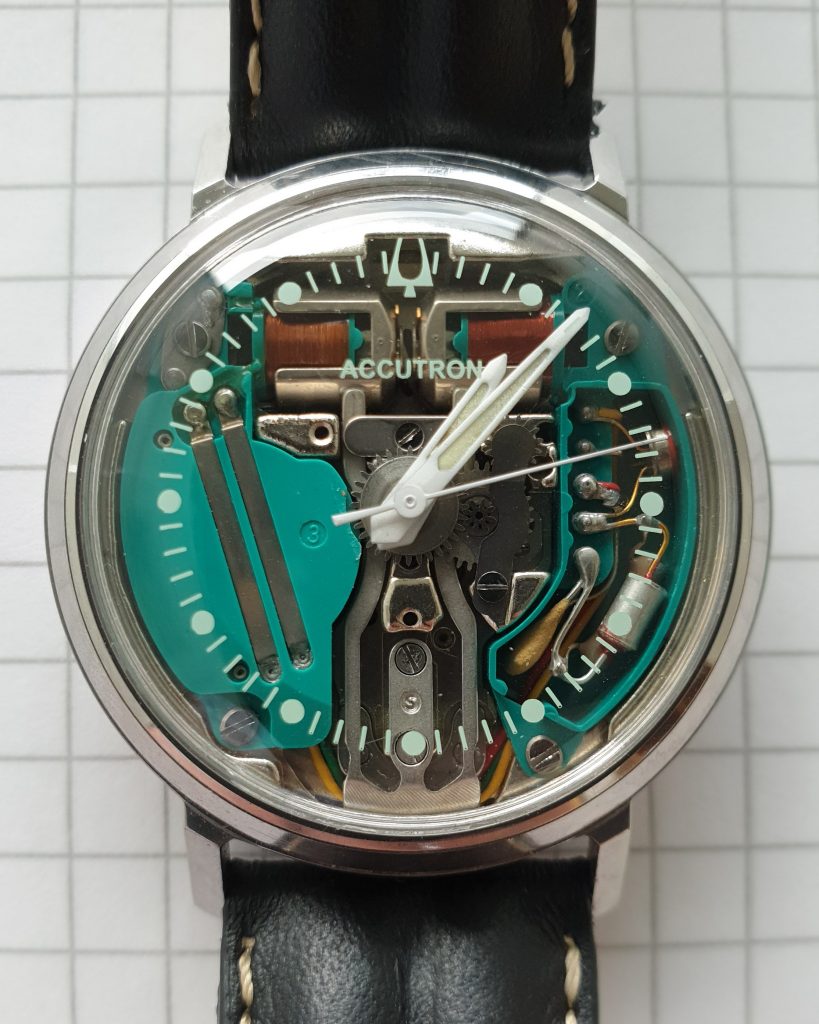| Brand | Bulova |
| Model | Accutron Spaceview (conversion model – not org.) |
| Year | 1963 (M3) |
| Caliber | Cal 214 Set time |
| Details | Size 34/xx/18 (w/h/lugs mm) Battery SR936SW Accutron 214 may be set only by turning the hands in a forward direction. 11.352.960.000 beats pr. year…. |
| Links | The Accutron Watch Page The Accutron Revolution Electric Watches Bulova date codes ebay / Anticvarius |
| Search | dba.dk / “Bulova” |
Link to Accutron page with the long read 😉
214 Accutron
This was the first model Accutron and the see-through Accutron Spaceview is no doubt the most well-known and sought-after model of Accutron. Model 214’s are easily distinguishable from other Accutrons by the fact that they have no setting crown. The time is set by a small semi-circular ring which swings out from the back of the watch. None of the 214 series were equipped with a calendar mechanism. The construction of the watch would not allow this without major modifications. Calendars were becoming common on watches by the mid 60’s, and this was probably a major factor in the development of the 218 caliber. Also, the lack of space on the back of the 214 for presentation engraving was one of the main reasons for not having a battery hatch on models subsequent to the 214. Aside from that, there were very few changes from the original design. The most significant were the addition of a slipping clutch on the center wheel instead of relying on an accurately-fitted cannon pinion (1960), the addition of stress limiters to the index and pawl fingers (1964), and the addition of a hack spring to some models (not sure when).
An interesting change to the electronics of 214’s took place some time in the late 1960’s. The original circuit used a Germanium PNP transistor and this was changed to a Silicon NPN type. This modification involved a slight change to the construction of both the cell coil and the component coil assemblies, as they needed to reverse the battery polarity for the new type of transistor. The way they did this was quite clever, and they didn’t have to make any new parts at all. It appears that they also changed the coil specs a bit as well, to compensate for the different characteristics of the new NPN transistor. The early PNP type is easily distinguishable by having three wires connecting the coil assemblies together, whereas the newer NPN type has only two. This change would not have made any functional difference to the watch at all. By the late 60’s, most semiconductor manufacturers were decreasing their use of Germanium except for special purpose transistors, so the decision by Bulova engineers to switch to NPN would have been made simply to ensure a continuation of supply of transistors.
All above from Mark Sirianni Watch Repair
